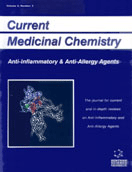Abstract
Prostaglandin E2 (PGE2) mediates fever and pain in various diseases through its action on the central nervous system (CNS). For the development of drugs that interfere with PGE2 action in the CNS, it is of importance to understand the nature of the PGE2 system there. Current studies on the PGE2 system in the CNS highlighted 2 groups of molecules on which drugs may act to interfere with the PGE2 action, i.e., (i) PGE2-synthesizing enzymes and (ii) PGE2 receptors. With respect to the first group, inducible-type cyclooxygenase (COX-2) and microsomal-type of PGE synthase (mPGES) were co-induced in CNS endothelial cells after systemic challenge with lipopolysaccharide or other inflammatory stimuli. Accumulating evidence has indicated that PGE2 produced through this endothelial COX-2-mPGES cascade is responsible for fever and pain. Of great importance is the fact that COX-2 and mPGES were co-induced preferentially in endothelial cells of the CNS and little in those of peripheral organs. Since drugs in the blood stream have quite effective access to the endothelial cells, it is theoretically possible to develop drugs that preferentially inhibit PGE2 synthesis in the CNS endothelial cells with lesser action on PGE2 synthesis in non-endothelial cells of peripheral organs, in which PGE2 might play housekeeping roles. Regarding the second group of potential drug targets, the EP3 subtype of PGE2 receptor is abundantly expressed in neurons of various brain regions including those involved in fever and pain modulation. However, in most of the brain regions, the pathophysiological roles of EP3 receptors are still unknown. Since EP3 receptors are expressed in parenchymal neurons, drugs that interfere with PGE2 at the receptor sites would need to pass through the blood-brain-barrier.
Keywords: COX-2, Endothelial Cells, Anti- Inflammatory Drugs, EP3 receptors, blood-brain-barrier
 7
7

